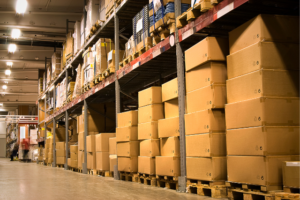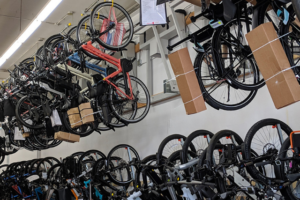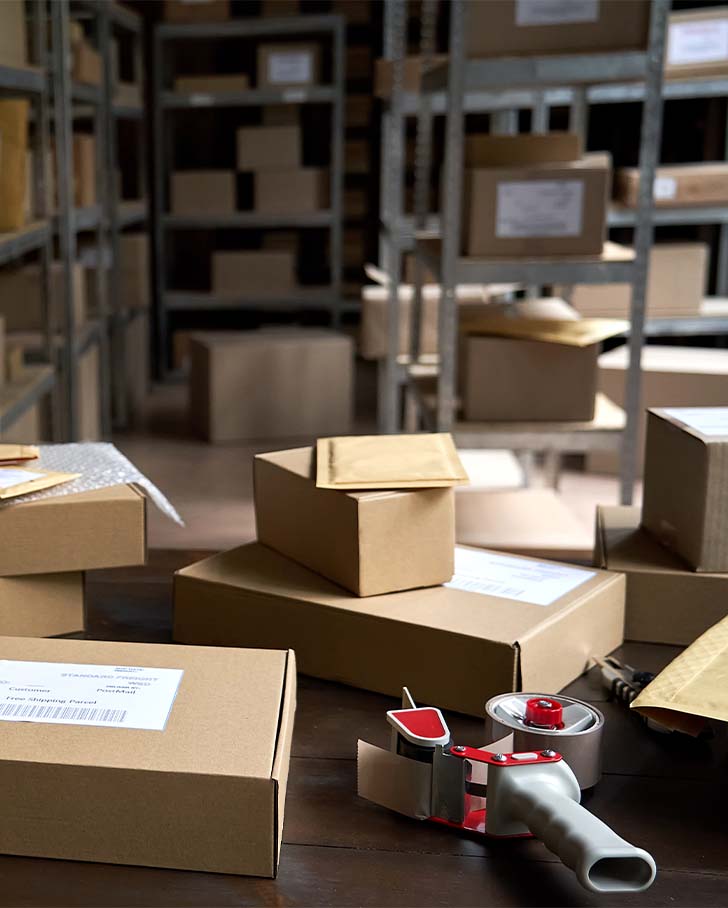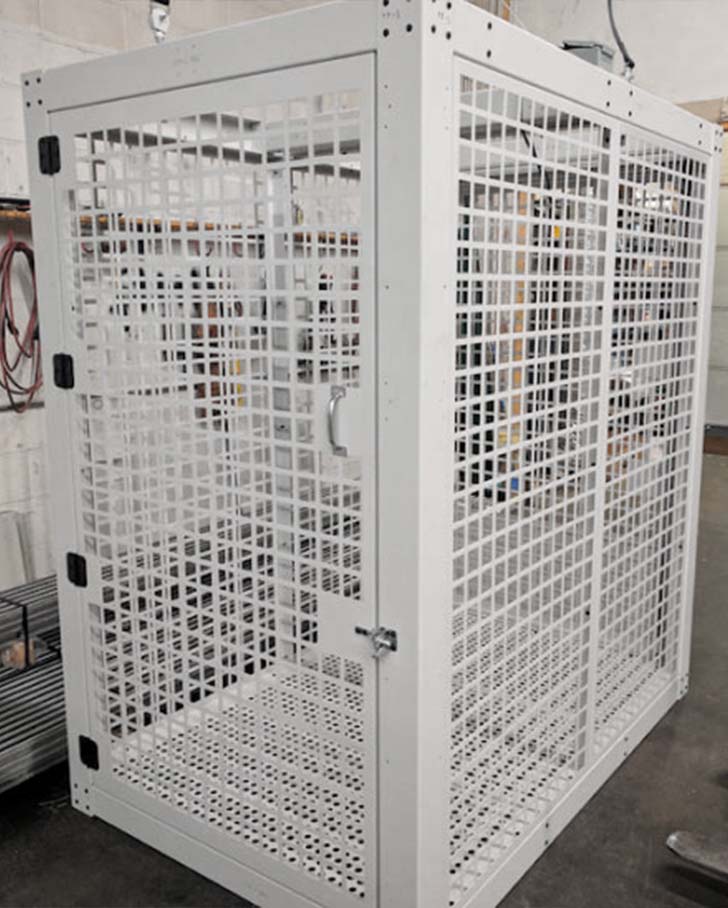Warehouse Injuries by the Numbers: What You Need to Know About Employee Safety Prevention
request a quoteIt is no secret that accidents happen, especially in busy environments like a warehouse. In the past few years, warehouses have had to ramp up production, working with increased demands and staffing shortages. As a result, injuries from falling off ladders, forklift accidents, and having inventory fall on workers are on the rise, making warehouse and shipping accidents the leading cause of workplace injury.
The good news is that warehouse accidents can be easily prevented by educating your team and implementing advanced safety technology. Creating a safe and healthy workspace is not only necessary to prevent accidents and injuries; it also can decrease cost setbacks, absenteeism, and turnover, as well as increase productivity and employee morale, all leading to a positive work environment.
Diving Into the Numbers
Warehouse injury statistics show significant numbers, only furthering the importance of implementing safer systems for workers. The Bureau of Labor Statistics provides numbers of ladder injuries in just 2020 alone:
- Total incidents: 21,180
- Incidents requiring medical treatment facility visits: 9,420
- Emergency room visits: 6,800
- In-patient overnight hospitalizations: 2,620
- 2,680 non-fatal injuries in Sales & related occupational groups (including retail & wholesale)
- 161 fatal workplace injuries in 2020 from which ladders were the primary source
- 105 deaths specifically from movable ladders
According to the National Safety Council, the average non-fatal ladder injury/workers’ compensation claim was $41,000. In general, workplace injuries cost American businesses $170 billion each year concerning increases in warehouse accidents. Warehouse injury statistics show that keeping employees safe is necessary for a business’s success, but it’s also necessary to prevent hefty costs.
What can you do for your team?
There are many ways to prevent accidents and injuries. Developing employee training, implementing safety checklists, identifying common hazards, and investing in safety equipment are all basic procedures to consider when brainstorming how to avoid accidents in the warehouse. Of course, preventing accidents and injuries is going to vary depending on each business, considering space and merchandise size; however, every business that requires warehouse storage should at least consider how to improve its processes. There are endless solutions and warehouse safety tips, but it’s up to everyone to decide what method can be effectively implemented.
Here are some accident prevention tips in the workplace:
- Clearly mark hazardous areas with warning signs and indicate where protective gear is needed
- Frequently check equipment like vehicles and forklifts to ensure they are in proper condition for use
- Train all employees on health and safety protocols and keep them up to date with new procedures
- Provide an appropriate number of breaks to avoid employee fatigue or altered concentration
- Install correctly sized railings and safety nets for high areas with a large risk of falls
- Check for proper ventilation and unobstructed exits
Implementing these warehouse safety tips can make a difference in a busy workplace. It’s important to always be thinking ahead to make sure you minimize warehouse accidents as much as possible.

Develop Employee Training
Proper employee training is a basic practice of any business, especially when the workspace has areas with fall hazards of four feet or greater. To ensure all team members are up to speed with the safety protocols, qualified safety training personnel should be responsible for teaching each employee and supervisor who may be exposed to falls. Warehouse injury statistics show that an easy way to stay on track is to schedule safety reviews to keep everyone updated on new operations.
It’s also important to consult your team and ask their opinion on how safe they feel and if they have any suggestions on ways to better operations and prevent accidents and injuries. The reality is that employee training is not a one-size-fits-all; it varies from one warehouse to the next. OSHA provides a safety video guide on how to avoid accidents so employers can decipher which training approach will best resonate with their team based on their preferred learning styles. By setting aside time for open discussion about safety and routine accident prevention training, employers can create a more controlled, safe environment for their employees.
Implement Safety Checklists
Checklists are simple reminders for everyone in the warehouse on top of safety precautions. Working in a warehouse is an extremely busy environment where it can be easy to lose track of small details that can lead to a huge disaster.
Here is an example of a basic accident prevention tips checklist to consider when aiming to prevent accidents and injuries:
- No unattended rolling racks or carts in walkways
- No material handling equipment on floor/walkway
- Emergency shutoff equipment checked prior to opening on any applicable equipment
- Fire alarms and devices checked prior to opening
- Before opening and throughout the operational hours, aisle ways checked for trash, paper, plastic, and other debris to be picked up immediately
- Adequate clearance maintained between racks and aisles, and means of egress assured
- Inspect all fall protection components for wear, damage, and deterioration before each use.
- Fixtures secured to prevent tip over
- Trip and slip hazards addressed before opening
- No empty fixtures on the floor
- Hazardous items (knives, other sharp items, etc.) kept in a safe, central location and out of an open display
While this is just a general checklist, there are countless other safety precautions to implement into a daily safety check.

Identify Common Hazards
Here are the top three most common warehouse injuries from minor to fatal in 2018 and 2019 according to HSE. Slips, trips, and falls were the number one reason for non-fatal injury in the workplace, while also being the most preventable. Because there are so many moving parts inside a warehouse, things such as empty boxes, cables, and other leftover debris can pose a serious hazard. It’s extremely important to ensure items like these are cleared from walkways in the event someone is not able to see where they are stepping or if they are not paying attention.
Manual Handling Injuries
The next leading cause of non-fatal injury is manual handling injuries. Lifting or carrying too heavy of an object while not following proper procedures can be extremely dangerous. Proper equipment should be provided for employees to lift heavy objects to avoid strains and sprains from repetitive strenuous work.
Machinery Operation Injuries
Injuries from operating a forklift, climbing a ladder, and falling objects are all too common in a warehouse environment. These types of accidents can cause severe injury making it extremely important to follow protocols when at risk. Failure to properly shelve items from lack of training or poorly constructed shelves can result in a severe head injury. Forklift injuries pose the most danger to workers in a warehouse. These injuries can involve fractures, dislocations, broken bones, and life-changing amputations.

Invest in Safe Equipment
It’s well established that injuries from using ladders and forklifts are much too common. By simply implementing a new, safer system and removing the need for these dangerous items, the warehouse becomes more effective in every way. Lift and Store offers just that, with their customizable, moveable, overhead shelves preventing accidents and injuries is easier than ever. With the press of a button, shelves can be moved within arm’s reach to safely grab whatever is needed. With 28 years of custom-producing overhead storage systems to perfectly fit each individual business and space, and covering everything from installation, employee training, and post-installation maintenance. As a bonus, the storage is far from the ground, making it easier to keep them clean and preventing the chance of items falling in a walkway or work zone. Lift and Store’s patented storage technology will improve inventory management customizable to any warehouse.
Implementing Automated Overhead Storage
Overall, the more seamless the warehouse storage systems are for the employees on the floor, the more productive work can be. Accidents are all too common in a busy warehouse environment, especially when workers are put in dangerous situations like using ladders and forklifts. When considering how to avoid accidents, it’s time to make the most of your warehouse space with wall-mounted overhead storage that’s easy for employees to maneuver and access without risking injury. Keep employees safe and minimize worker accident costs, check out our safe storage options for your business today.




